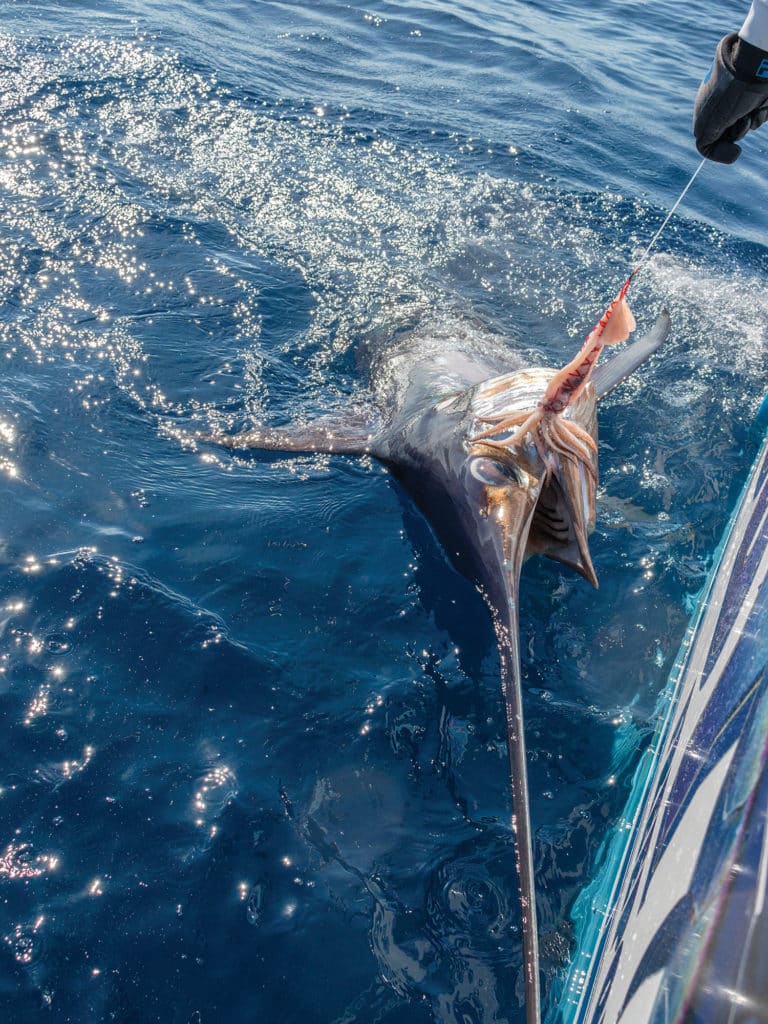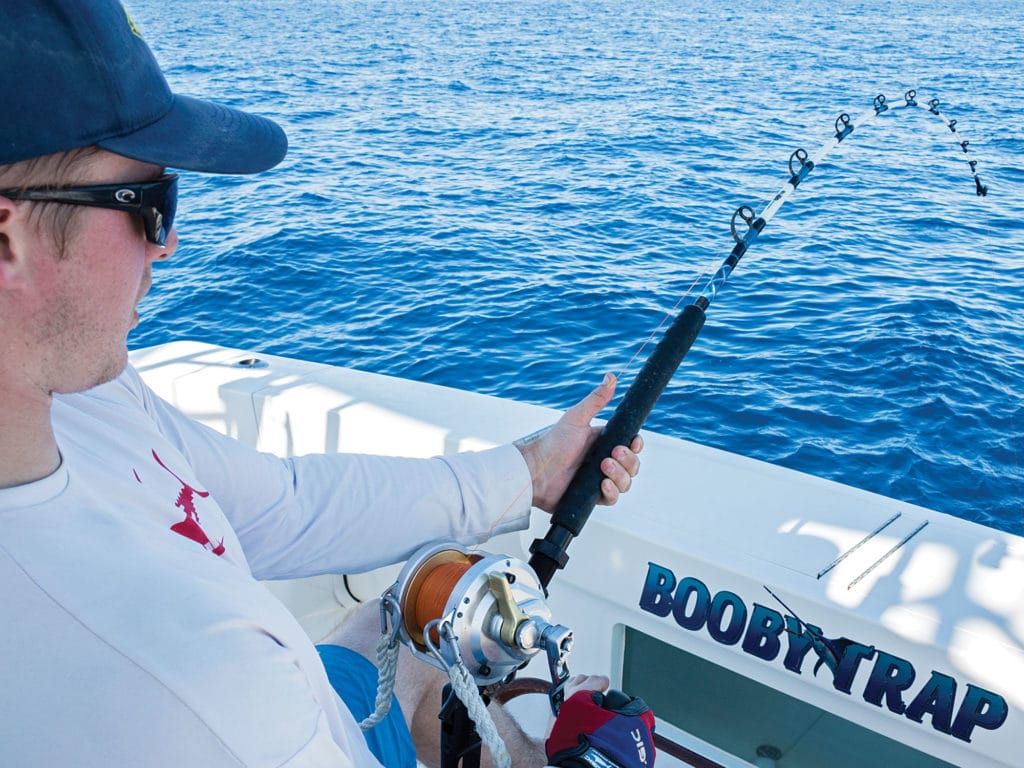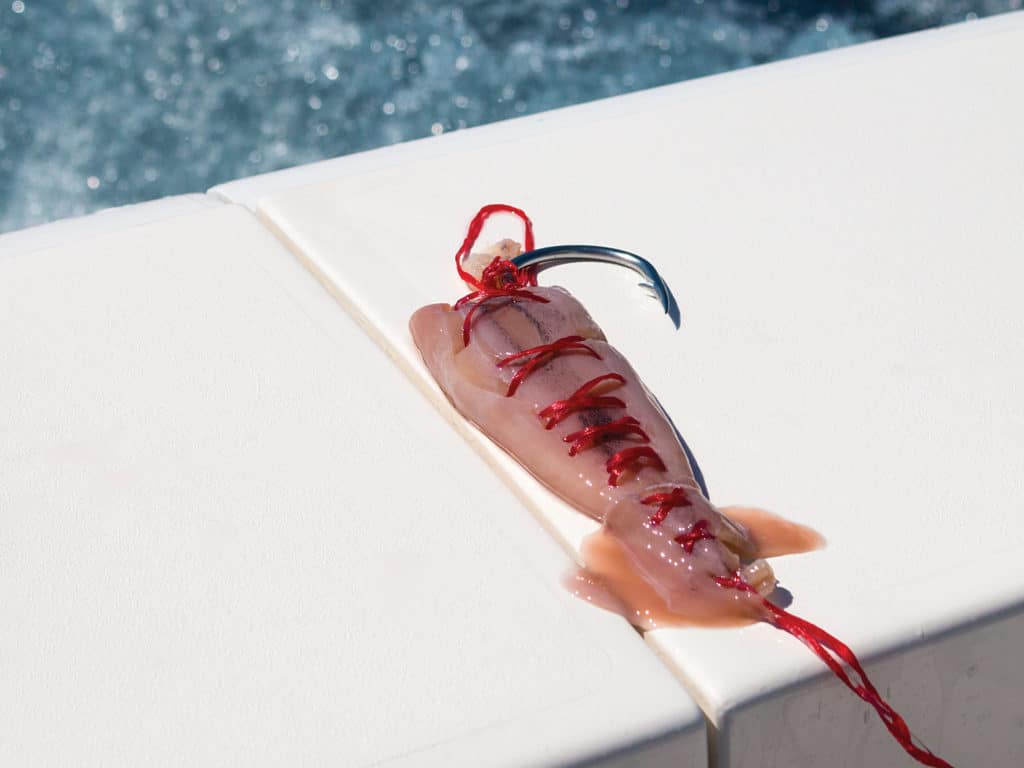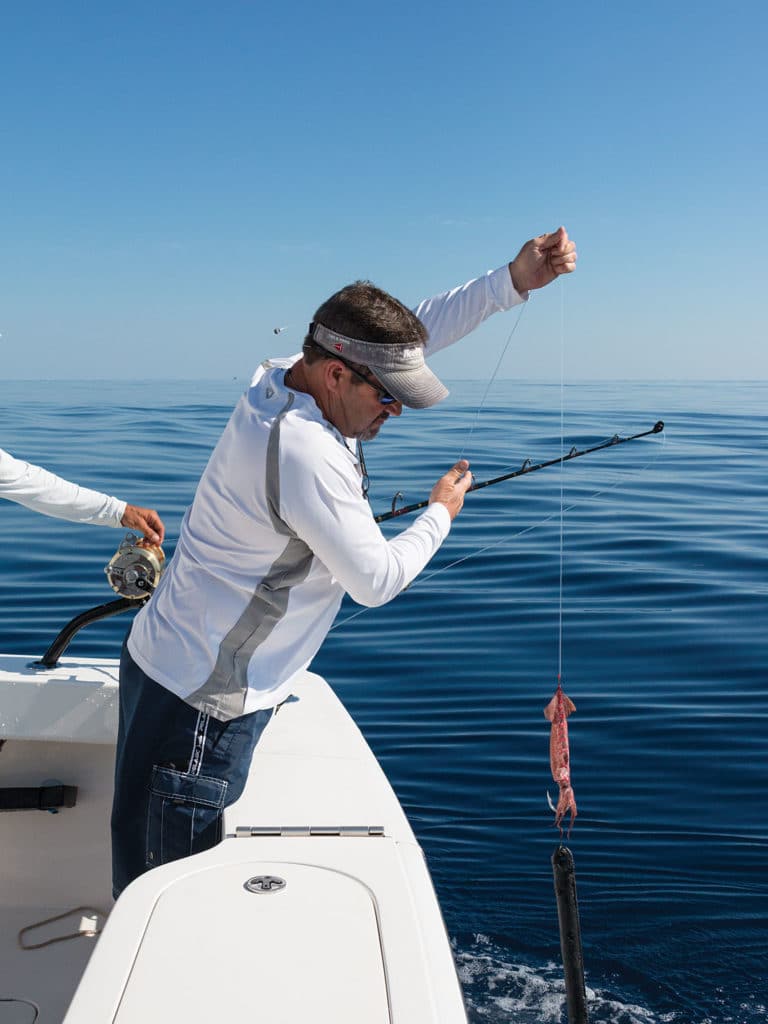
Since the days of Zane Grey, swordfish have been one of the most prized saltwater game fish. Not long ago, they were nearly overfished commercially, but these days, it seems these pugnacious predators are once again prowling the depths in good numbers from the East Coast to the Gulf of Mexico, the Pacific and beyond.
Few captains have more experience in tangling with trophy-size swordfish than Brett Holden, who has more than 1,000 swords to his credit. To post numbers like that, he’s refined swordfishing to more science than art.

The Setup: Rods, Reels and Terminal Tackle
One of the keys to Holden’s swordfish success is the rod. He prefers a stick with a lighter than normal tip so he can detect a bite through 1,600 or more feet of braided line, and he recently introduced his own line of GTS series rods. In addition to the tip action — which also reduces pulled hooks from head shakes close to the boat — the rods have super-hard Fuji guides that resist grooving from the miles of braid sawing back and forth over them. Holden also likes the Winthrop Adjusta-Butt rod-butt system that allows the angler to rapidly switch back and forth between straight and bent styles. “If the fish is directly down, you can use the bent butt for leverage and then switch to a straight butt when they come up,” Holden says.
The rods are matched to 50-pound-class Shimano Talica or Tiagra reels spooled with 65- to 80-pound-test braided line in high-visibility orange; leader is 300-pound clear Momoi. “We use the Pakula 4x hooks, but the Mustad 7691 is the old standby,” Holden reports. “The 11/0 is our standard size, but we’ll drop down to 10/0 for smaller squid or go up to 12/0 for larger ones.” Holden completes the setup with a Lindgren-Pitman Duralite Diamond light in blue or green, positioned about 30 feet above the bait with a rubber band.
The Squid Rig

While swordfish will eat an amazingly wide variety of baits, the rigged squid remains a worldwide favorite. Holden rigs his Baitmasters squid with 70-pound waxed floss and goes to great lengths to ensure each bait is perfectly rigged before it goes in the water. “It takes about 12 minutes for us to rig one squid,” he says. “Rigging one is time-consuming and expensive, but the bait has to stay together, and you don’t want it to spin on the way down. It also has to withstand multiple strikes by the fish and needs to stay in position on the hook. If the bait is not swimming just right, it’s not going to get the big bites. And if you have a 1-pound squid sliding down the shank, the hook is going to pop out of the fish’s jaw.”
The Weight System
Holden uses a unique system of weights to send the rig into the depths. A 6- to 9-pound window weight or section of no. 11 rebar with a short piece of flexible fencing wire at the top is connected hook to hook with the squid rig, and a smaller 3-pound cannonball weight is attached near the top of the leader using a longline clip and a 4-foot section of 80-pound monofilament.

Upon reaching the bottom, the primary weight detaches and the cannonball keeps the squid rig fishing just off the bottom and right in the strike zone.







